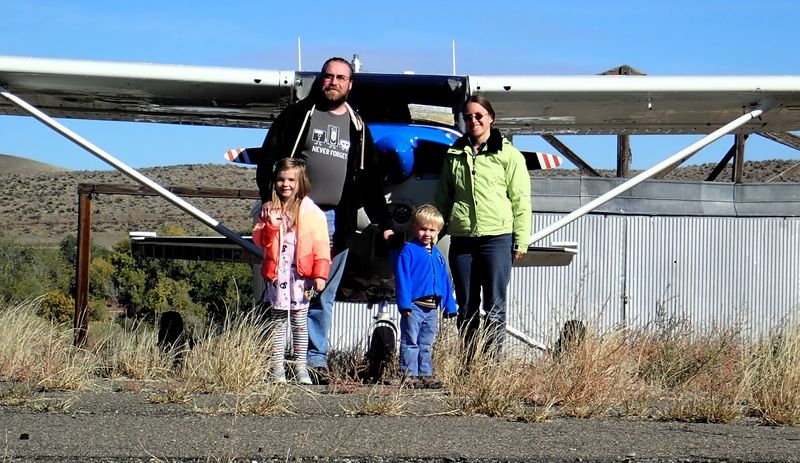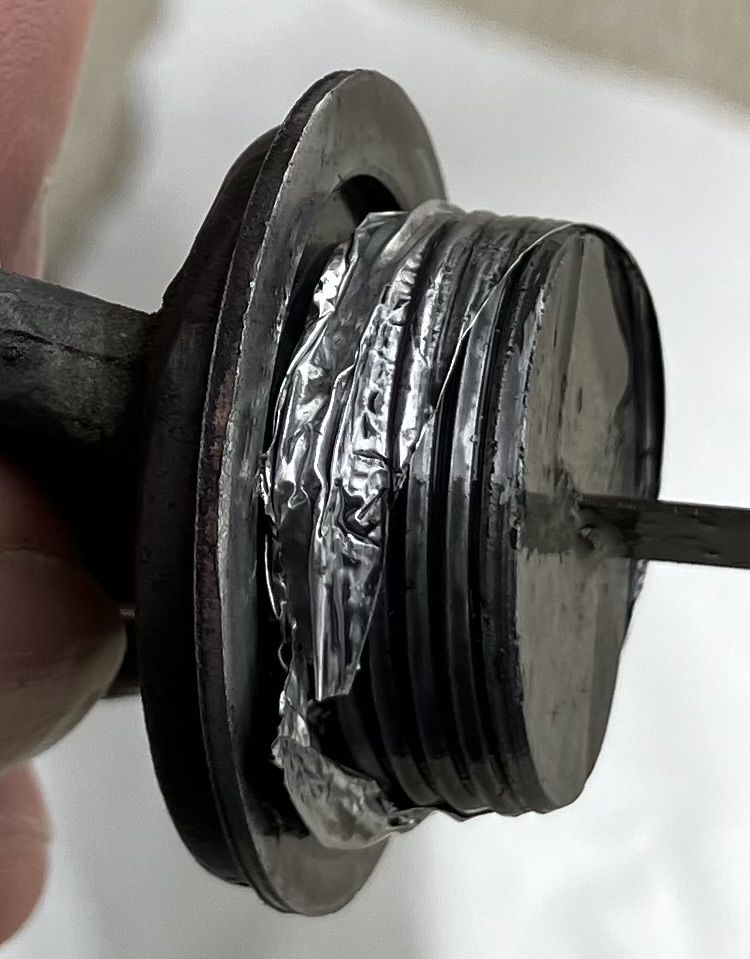This week, I’m talking about what went on Friday - new rubber for my tractor! This has been a rubber-heavy year, with new tires for the car, truck, and tractor (motorcycles, while I have spare rubber, have been low enough miles that I haven’t had to replace anything yet). In the case of the tractor tires, this is even a nice onsite service, where the tire company will send a truck out to do the work at your tractor!
My tractor is a Ford 9N, build sometime around 1941 as near as we can tell, putting it at 80 years old. It’s a useful little property tractor, and while it’s not nearly as nice as some of the modern tractors one can buy, I’ve paid an awful lot less for it than I would for something new - even with the cost of new tires. Tractor tires aren’t cheap, but at least this is a standard enough size!
The fronts are 4-19s on 19” wheels (the same size as the Urals!), and the rears are 11.2-28s on 28” wheels. Yes, the fronts look tiny in comparison! When the new front tires showed up, my daughter took one look, and said, “Those can’t be for the tractor! They’re big! The tractor has small front tires!” Everything in relationship…

The Old Tires
The old tires have been a “Oh, these could use replacement…” item since long before I bought the tractor several years back. Historically, this tractor has wandered around the family, and “where it is” and “who technically owns it” haven’t always had much of anything to do with each other. Unfortunately, those arrangements mean that maintenance is often minimal, so I bought it (as the person who was using it most), and now I have no problems at all sinking a couple grand of work into it. But… these tires…
The “Good condition rear” (on the right) is an Allstate tire, date code U101550P. The lugs are worn, and it’s showing plenty of cracking between the treads.

Tractor tires are directional - you can’t just swap them side to side and expect them to work terribly well, though I’m sure some people have done it. The lugs are starting to shed chunks, and the tire is just getting up there in years.

On the left, though, the Harvest King tire, date code 480F7H4, is just trash. It’s been bad and getting worse. The carcass is now missing chunks, the cracks are going through the lugs, and it’s just well and truly toast.

It’s got cracks in all the places. Sidewall, tread, just everywhere. This tire is done, and probably has been done for quite a few years now.
You can see the corrosion on the wheel - especially around the edges. These tires were filled with what I presume, based on the “unknown but quite old” age, to be calcium chloride. This adds about 280 lbs/tire, and adds a useful amount of additional traction weight directly where it’s needed, without adding any real stresses to the rest of the tractor frame. Suspension is “Well, the tires are air filled, what more do you need?” - so no concerns there.
The major downsides to calcium chloride are that it’s rather corrosive, and rather unfriendly to fields. You don’t want to get a puncture and have a tire drain into the field with that in it. The newer options are both less corrosive and less toxic. Just, not terribly cheap.

Based on the rim condition, I expected at least one of the rear rims to be entirely corroded (which it was). Fortunately, one can get new generic-enough tractor rims that will fit tractors like this. Even with the new rims, these are still tube type tires, so they’ll be getting a tube.

My son really likes our tractor! He’s almost as tall as the wheel now! He’s been talking all week about wanting to watch when the tractor gets new tires, and timing worked so he was around and able to watch!

New Rears!
The new rear tires showed up on the truck with the rest of the equipment. They look good! Not only do they match, they have nice crisp lugs, they’re not cracking… and with how few miles I put on this tractor, they ought to last an awfully long time. I should probably consider building a shade barn for the tractor at some point - help keep the sun off the rubber bits.

Tires are one of the fairly few things that I’m happy to pay someone to do. I can do tires. I’m just no good at doing tires, and don’t have any real desire to do it often enough to get better. These? With the tires being around 400lb/side filled, me not having the equipment to fill them, and me not having the proper tools to do this sort of thing (a massive impact wrench, huge air compressor to drive it, and some tire irons in the 4’ range), I’m happy to pay someone else for it on the infrequent schedule that they need work. These, ideally, will last an awful lot of decades of my property use!

With the tube in, and the stem held by the fancy stem-holding-chain-gizmo (seriously, I need to get one of those - I’ve lost so many stems in wheels over the years…), it’s ready for air!

I won’t claim the process was quiet. The truck involved has a built in air compressor, and running it involves the engine turning about 2000 RPM - constantly. It ran the air tools with no problem, aired up tires great, ran the air powered fluid injector - just very loudly. Apparently the service life of an engine on one of these trucks is rather less than one might expect for a truck engine - this truck was on it’s third engine in 300k miles.
The tires are aired up, installed, and then filled once on the tractor. Wrangling a filled tire is an awful lot harder than an air filled one!

In related antics in the morning, my son has worked out pumping on swings, and if he feels like it, he can really get going! Why swing if you’re not getting past horizontal?

And our pumpkins!

With both tires filled, time to install them!

Flipping the Rims for Spacing
A common question about the two piece rear wheel assembly is, “Why?” A convenient reason for me is that I can replace just the rear rim without having to replace the dish - but why weren’t they built as a single unit? For adjusting tire spacing. By this design, you can select a track width in 4” increments, from 48” to 76” - without having to do anything but change how you’ve bolted the rear wheels together.
Useful for row crops, which is exactly what this tractor was built to do.

In the front, there’s another set of nuts that allows you to do the same sort of thing, ranging from 48” to 76”. It’s a slick design, and this is why you see so many tractors of the era having dished rear wheels. Spacing adjustment!

Installing the Rears
However, the rears haven’t been off this tractor in an awfully long time, so this bit involved someone else doing a lot of pounding on bolts. I expected it to be a problem, so I got a replacement bolt kit, meaning that there’s no worries with banging up the threads getting the old stuff out.
The first step involves using some air powered jacks - which are a very nice cheating bit of cheatery, vs having to hand crank stuff up…

With one back wheel jacked up and a large oak block under the frame just in case the jack had problems, the old wheel can come off.

This involved extensive use of an impact gun, a screwdriver as a chisel to remove washers, the previously mentioned extensive pounding on the bolts to remove them, and then yet more pounding on the wheel to free it from the center dish. This sort of thing is exactly why I pay someone to come do tires, because I just don’t enjoy doing that sort of thing as much anymore.

However, after a while, the rim came free, and a very heavy tire was rolled away. You can see how the dish offset works here - mounting the rim gives four options with it this way, and four with the dish flipped out.

A new rim, a new set of bolts, a bit more time with an impact wrench, and one new tire is installed on the tractor! Check out those grippy lugs! Sharp corners and everything!

This is a fluid injector for tractor tire weighting. I’ve no idea how it works. It has a tube leading into the slime bin (the stuff is apparently quite unpleasant to get on your hands), a tube leading to a thing on the tire, is air powered, and goes “kachunk” an awful lot until the tire is full of ballast.

This is the part of the fluid injector that goes into the tire. With the valve stem at the 12:00 position and the tire largely drained of air, it pushes the fluid in. It can also drain it, somehow.

The other side, that I was afraid was quite beat up? Yeah. The rim is just garbage. I knew it was going to be bad, I didn’t know it was rotted clear through in points.

Now the Fronts!
The fronts were easier - just one jack point in the middle. Some tractors have really big, chunky front axles for 4WD and such. Not this one! Just a light spindly front end. If it didn’t have it, it would be two tired and would take a nap in the dirt!

The front 19s come off easily, without any of the drama of the rears.

One of the wheels was in really good condition, and this set of rubber had the proper beads to run tubeless - so, hey, why not? Worth a shot, and I can always dismount them and take the in if it doesn’t work. The rears, not so much. Fronts are easy.

This contraption is a bead seater. You fill the tank with air, put it in the proper place, and a huge burst of compressed air rushes into the tire and magically seats the bead amid a roar of air. It works!

The other front, unfortunately, was not in nearly so great of shape (so has a tube, parts of which are showing), and I’ll probably get a set of new front wheels on order here with my next order of tractor parts. On the other hand, I did learn a nifty trick with vice grips to help add an extra hand when seating rubber!

All Done!
Two brand new rear tires, with fresh lugs, new rims, and loaded with ballast!

Two new fronts, one tubed, one tubeless (for interesting comparisons, I suppose), with a nice thick pair of 6-ply shoes.

And I should be ready to go for another couple decades! Now to get the battery replaced… My solar charger hasn’t been working quite as well as I’d hoped.

Investigation reveals… oh, right. The solar panel has hazed badly from being out in the sun. sigh I’ll find something better…

But, the tractor has new rubber for the first time in at least a few decades (if not longer), I’ve got chains for winter traction if I need them, and I should be good for quite a while longer here!
Comments
Comments are handled on my Discourse forum - you'll need to create an account there to post comments.If you've found this post useful, insightful, or informative, why not support me on Ko-fi? And if you'd like to be notified of new posts (I post every two weeks), you can follow my blog via email! Of course, if you like RSS, I support that too.






